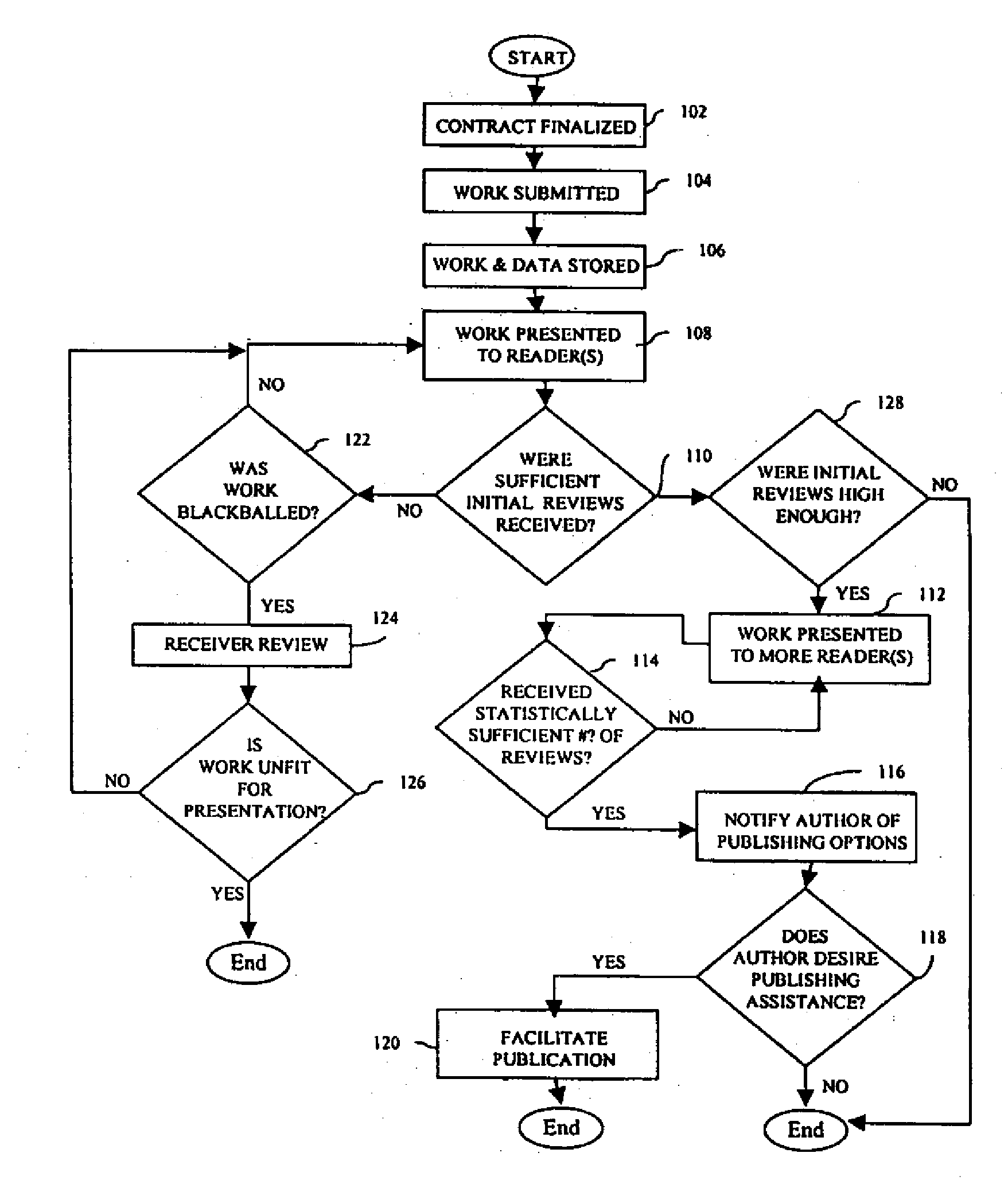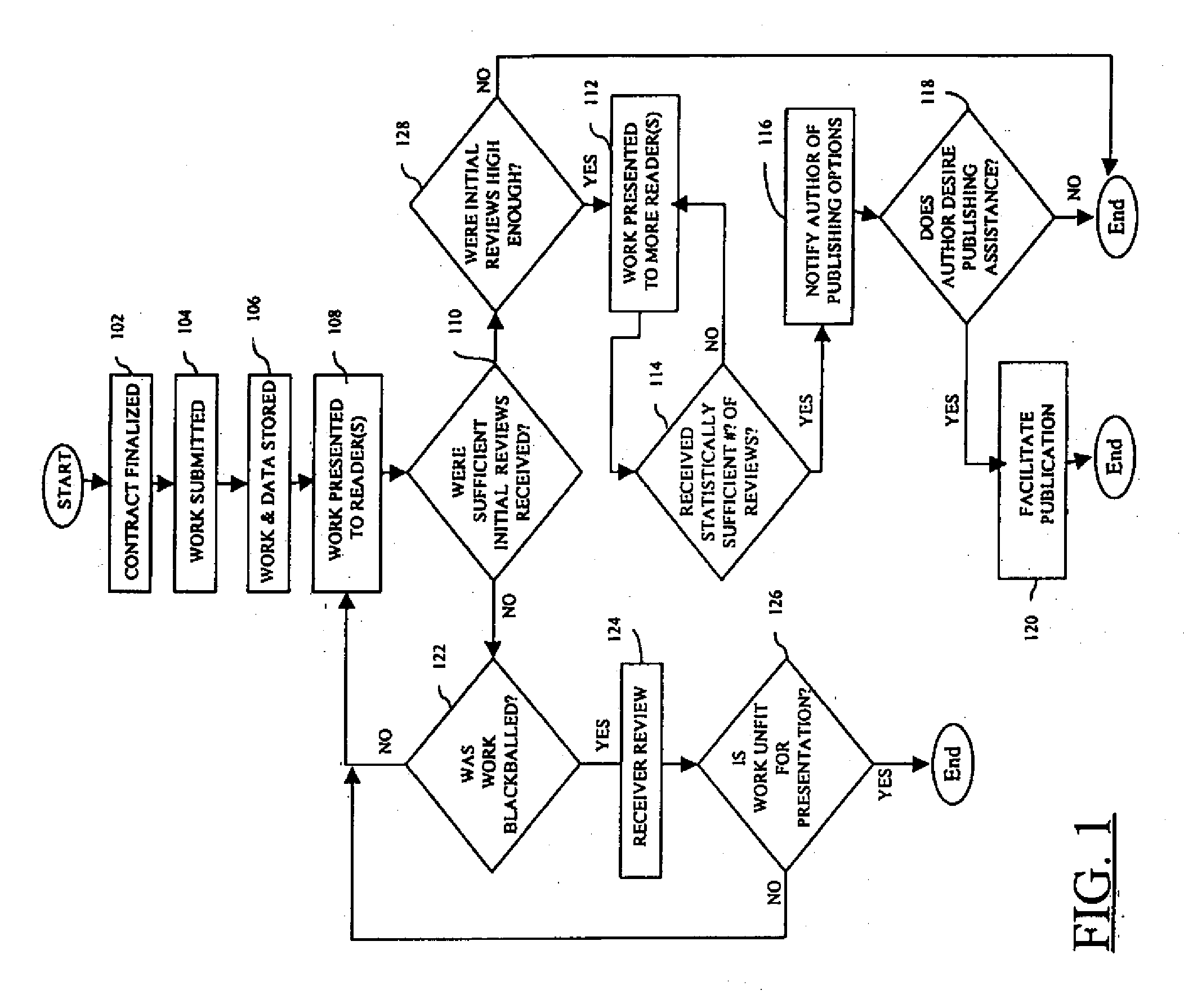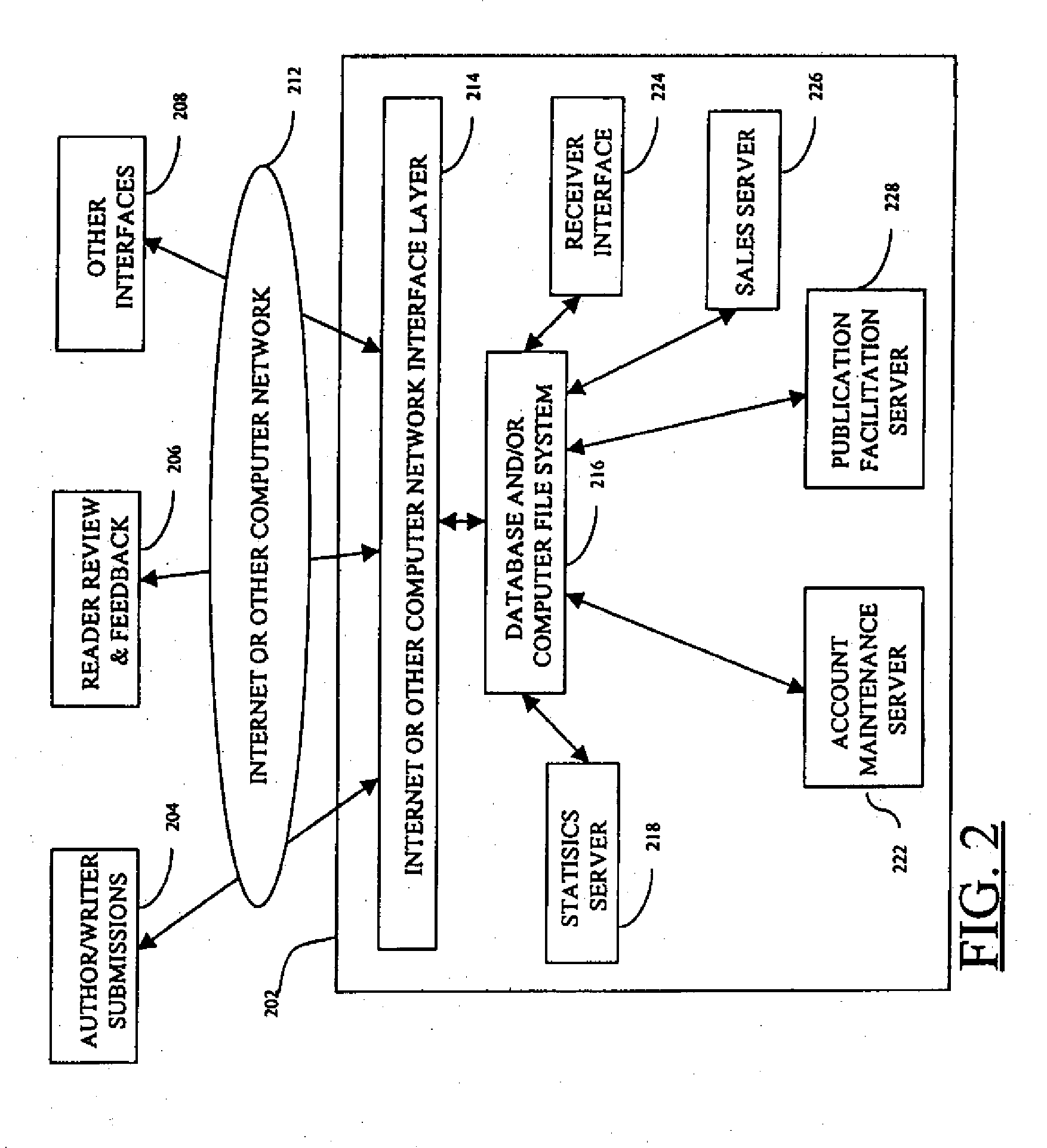System and method for automated, reader-based filtration of literary works at internet-related submission site
a literary work and reader-based technology, applied in the field of system and method for automated, reader-based filtration of literary works at internet-related submission sites, can solve the problems of difficult identification of authors/writers and literary works, high variability in the success of individual works, and large manual effort and expense of identifying, so as to maximize the efficiency of the rejection/approval process, improve the author's/writer's writing style, and minimize the number and need of resubmissions
- Summary
- Abstract
- Description
- Claims
- Application Information
AI Technical Summary
Benefits of technology
Problems solved by technology
Method used
Image
Examples
Embodiment Construction
[0031]According to an embodiment of the present invention, as depicted in FIG. 2, for example, a forum and system 202 is created for the review of unpublished or minimally published literary works to receive reviews from members of the reading public. The reviews of works are statistically or otherwise analyzed by a statistics server 218 for the purpose of evaluating the potential for success of the work and the potential for success of the authors / writers in the marketplace. Beyond analyzing the potential for success, the system facilitates the process of bringing the works to the marketplace and in communicating to the targeted audience the level of success expected for the work based on the reviews mentioned above in the form of marketing materials.
[0032]While the internet is ideal for this invention, use of the invention by other networks or computer systems is quite feasible including but not limited to wireless, or private networks.
[0033]Although the system 202 is designed for...
PUM
 Login to View More
Login to View More Abstract
Description
Claims
Application Information
 Login to View More
Login to View More - R&D
- Intellectual Property
- Life Sciences
- Materials
- Tech Scout
- Unparalleled Data Quality
- Higher Quality Content
- 60% Fewer Hallucinations
Browse by: Latest US Patents, China's latest patents, Technical Efficacy Thesaurus, Application Domain, Technology Topic, Popular Technical Reports.
© 2025 PatSnap. All rights reserved.Legal|Privacy policy|Modern Slavery Act Transparency Statement|Sitemap|About US| Contact US: help@patsnap.com



